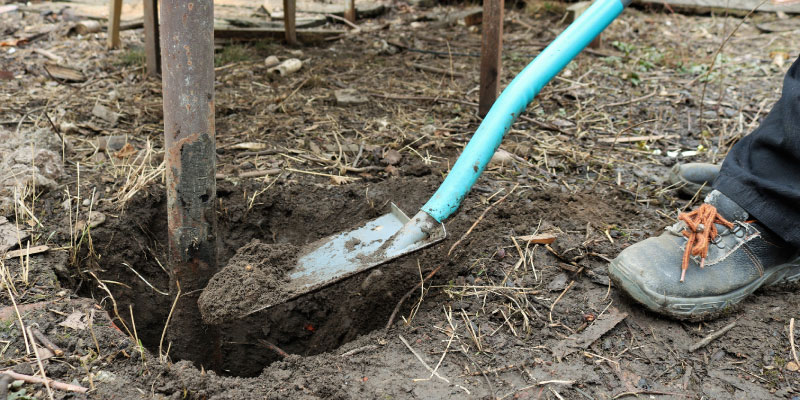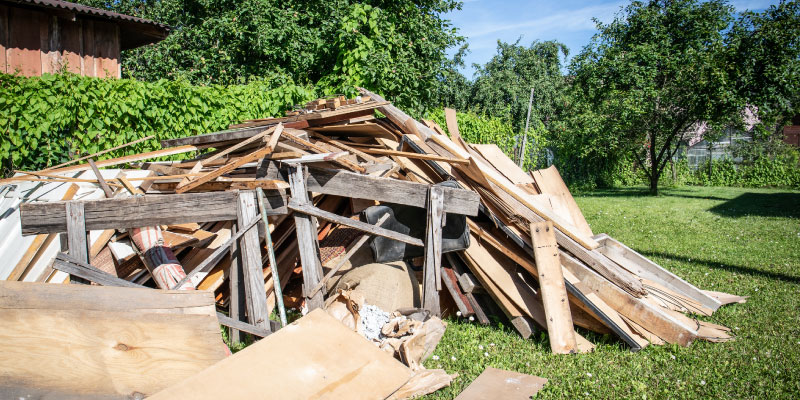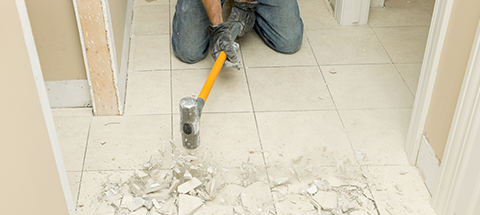
Updated April 15, 2024
Removing an old fence post can be a pain in the neck (or back). Not only are fence posts set in a concrete footing typically two feet underground, but if the post has become rotten and is no longer sturdy, it will make removing it even more complicated.
Of course, you could dig out the post and concrete with just a shovel and some muscle, but digging two feet underground is hard to do, especially if the soil is full of clay or rock.
Instead, we'll show you how to remove your fence posts and concrete footings using simple, inexpensive tools in a way that requires minimal digging.
Whether you are looking to replace the existing fence post with a new one, or you want the entire fence gone, this method makes it as easy as possible without hiring someone else to do it.
Jump to:
Find fence removal pros near me
Tools You'll Need
It's important to have the necessary tools before beginning your fence removal project to not only ensure your safety, but to ensure that there are no delays once the project beings.
- Shovel
- Steel chain (should be about 3-6 ft long)
- Slip hook
- Grab hook
- High-lift jack (48 inches is best)
- Digging bar (for hard/rocky soil)
- PPE (gloves, goggles, hard hat)
Having all these items before getting started will help make the fence removal process go as smoothly as possible. We'll break down how to approach a DIY fence removal project step-by-step, but watch the video below for a visual to see exactly how it's executed.
This video does an excellent job of showing the fence post removal process...
How-To
Step 1: Assess the Fence
Before starting to the fence removal process, it's important to assess the entire fence and check for loose, damaged, and rotting pieces.
If you noticed parts of your fence are vulnerable, remove those pieces before you begin digging to lessen the chances of parts of your fence falling on top of you during the removal process.
It's also important to know the type of soil that your fence is built in. If you aren't already sure, assess the soil around the fence. If it's compact, dry soil, like clay, getting the soil wet before beginning the removal process could make your project easier.
Double check that there are no underground utilities or obstacles that could interfere with the fence removal process. If you're unsure, hiring a professional is the best way to protect yourself and your property.
Learn more: Can You Recognize the 5 Signs of a Bad Fence?
Step 2: Dig Around the Fence Post

The first thing you'll want to do is begin to loosen the fence posts from the ground.
Use your shovel to dig around the fence post until the top 3-4 inches of the concrete footing is exposed.
Generally speaking, the wider the hole is dug, the easier it is to remove the post, so don't be afraid to dig the hole on the wide side.
Keep reading:
- Fence Removal 101: What to Expect & Average Costs
- How to Remove a Chain Link Fence
- Replace Your Old Fence to Boost Your Property Value
Step 3: Wrap the Chain Around the Concrete Footing
Once enough of the concrete footing is exposed—usually around 6 inches below ground—securely wrap the chain around the concrete footing.
Pull the chain so it's wrapped tightly around the concrete, then use the slip hook to securely connect the chain to itself.
If you're using a 48-inch chain (which is what we recommend), then you should have roughly 12 inches of the chain left with the grab hook at the end of it.
If you have less than a foot of chain left to work with, you will likely want to get a longer chain (or adjust the length of the one you have by relocating the slip hook to a different chain link).
Step 4: Hook the Chain to the High-Lift Jack
With the remainder of the chain in hand, securely connect it to the top of the jack.
Then, use the grab hook to latch the chain to itself and lock it around the jack.
Keep the chain as close to the bottom of the jack as possible to prevent the jack from being pulled forward or from slipping off once you start jacking it up.
Step 5: Lift the Concrete Footing Out of the Ground
With one hand, keep the jack sturdy and straight, then use your other hand to crank the jack's lever.
As the tension in the chain increases, you may notice the jack start to lean toward the post. This is okay, but it should be limited as much as possible.
If the jack leans too far forward, you'll likely need to stop to adjust the jack and start over, in some cases from a different angle.
Once you've cranked up the jack enough, the post should come right out of the ground.
However, if the post is in soil that is full of clay or rock, getting the soil wet with a hose may help ease the process along, as it helps to loosen dry, hard-packed soil.
As you can see, the process of removing fence posts with concrete footing isn't very complicated. However, we know that not everyone has the ability to remove fence posts themselves, let alone multiple fence posts. So, if you need help removing your fence, find a local professional to get it done right.
Read more about each contractor, go over reviews from real customers, and request free quotes from multiple contractors to compare pricing, customer service, and availability—all in one convenient place!
Step 6: Disposal

Depending on the material your fence is made from, you may be able to have it recycled. This is not to say, however, that you can just throw your fencing material inside your weekly recycling bin.
If your fence is big enough, renting a temporary dumpster can offer an efficient and convenient solution.
However, if you don't have enough fencing material to justify renting a dumpster, hiring a junk removal to swing by and haul away your removed fence is often the easiest and fastest way to get rid of your unwanted material.
Most junk removal companies are notorious for their commitment to green disposal, meaning they donate and recycle as much and as often as they can, limited the amount of items and materials they unload at local landfills.
Just like with demolition contractors, our sister site, Hometown Dumpster Rental, can help you find local junk removal and dumpster rental companies that service your area. We made it beyond easy to request free estimates to compare and contrast each service provider to ensure you hire the best company for your fence disposal project.
Learn more about fence removal:


